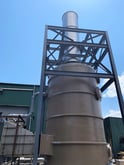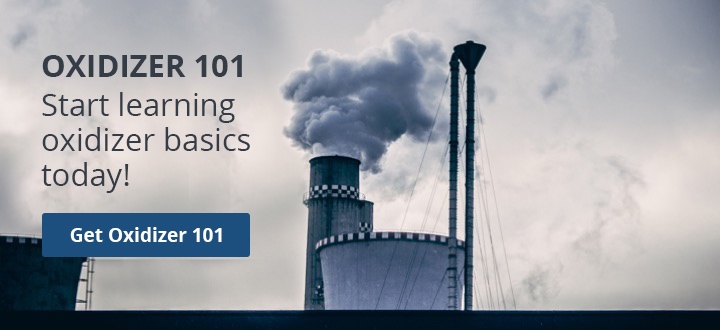Metal & Auto Shredding VOC Emissions Control
The pulverizing and shredding of scrap material leads to the liberation of particulate emissions as well as volatile organic compounds (VOCs), hazardous air pollutants (HAPs) and nuisance odors. In addition, ELVs and appliances which are not completely drained of refrigerant fluids can emit chlorofluorocarbons (CFCs) leading to acid gas emissions.
In July 2021, the United States Environmental Protection Agency (EPA) issued an Enforcement Alert because EPA and State investigations have found violations related to excess VOC emissions at several facilities.
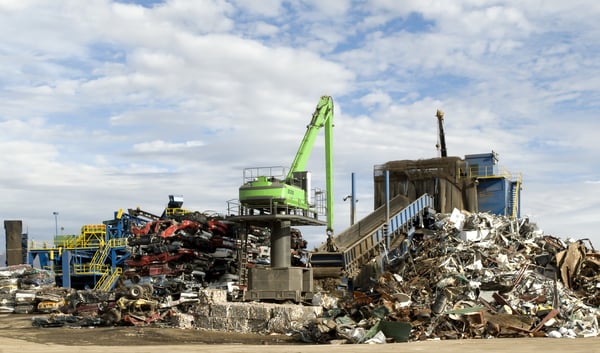
Air pollution control in metal shredder facilities has historically been focused on the containment of metal shredder residue (MSR) utilizing filtration technology such as cyclones, baghouses, scrubbers, as well as suppression technology such as water or foam injection. While these technologies are effective for containing particulate matter (PM), they are not sufficient to control the harmful volatile organic compounds (VOCs) which can pass directly through these systems and into the atmosphere.
Metal Shredding Industry
 The metal recycling industry has matured and grown during the past several decades. Specifically, the recycling of end-of-life vehicles (ELVs) and other obsolete consumer products has become a well-established industry with many economic and environmental benefits. While the net environmental benefits of recycling ELVs may be clear, it is important to recognize that the recycling process is not without environmental concerns. With such growth also comes increased regulatory pressures and public scrutiny.
The metal recycling industry has matured and grown during the past several decades. Specifically, the recycling of end-of-life vehicles (ELVs) and other obsolete consumer products has become a well-established industry with many economic and environmental benefits. While the net environmental benefits of recycling ELVs may be clear, it is important to recognize that the recycling process is not without environmental concerns. With such growth also comes increased regulatory pressures and public scrutiny.
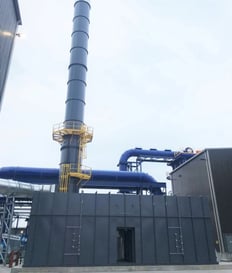 A "metal shredding facility" is an operation that uses a shredding technique to process end-of-life vehicles, appliances, and other forms of scrap metal to facilitate the separation and sorting of ferrous metals, nonferrous metals, and other recyclable materials from non-recyclable materials. Metal shredding operations all follow the same basic process. The metal shredding facility receives scrap metal input materials, such as whole vehicles and large appliances. Certain hazardous wastes that are still present are removed from the input materials in a process commonly referred to as “de-pollution.” The de-polluted input materials are processed through a hammer mill to break down large metal pieces into smaller pieces, resulting in metal shredder aggregate. Iron-containing metal, or ferrous metal, is separated out, and the remaining metal shredder aggregate is further processed to sort the non-ferrous metals. The material that is left after ferrous and non-ferrous metal separation is referred to as “metal shredder residue (MSR),” which is chemically treated and sent to landfills.
A "metal shredding facility" is an operation that uses a shredding technique to process end-of-life vehicles, appliances, and other forms of scrap metal to facilitate the separation and sorting of ferrous metals, nonferrous metals, and other recyclable materials from non-recyclable materials. Metal shredding operations all follow the same basic process. The metal shredding facility receives scrap metal input materials, such as whole vehicles and large appliances. Certain hazardous wastes that are still present are removed from the input materials in a process commonly referred to as “de-pollution.” The de-polluted input materials are processed through a hammer mill to break down large metal pieces into smaller pieces, resulting in metal shredder aggregate. Iron-containing metal, or ferrous metal, is separated out, and the remaining metal shredder aggregate is further processed to sort the non-ferrous metals. The material that is left after ferrous and non-ferrous metal separation is referred to as “metal shredder residue (MSR),” which is chemically treated and sent to landfills.
Many existing metal shredder permits cover only particulate matter (PM) and fugitive emissions. As the shredding industry evolves and environmental regulations expand, industry faces new challenges related to the treatment and disposal of metal shredder residue (MSR) and the control of volatile organic compounds (VOCs), hazardous air pollutants (HAPs) and nuisance odors.
Metal Shredding & Volatile Organic Compound (VOC) Emissions
The pulverizing and shredding of scrap material can lead to the liberation of volatile organic compounds (VOCs), hazardous air pollutants (HAPs) and nuisance odors. Specifically, ELVs and appliances which are not completely drained of refrigerant fluids can emit chlorofluorocarbons (CFCs).
Many metal shredder facilities utilize scrubbers as part of a particulate control system. While some water-soluble VOCs may get captured in the scrubber, these units are not optimized for VOC control, and allow the non-water-soluble VOCs to pass untreated and straight through into the atmosphere.
A Best Available Control Technology (BACT) solution for VOC control will include the following process steps:
Shredder > Capture > Cyclone > Filter > RTO > Scrubber
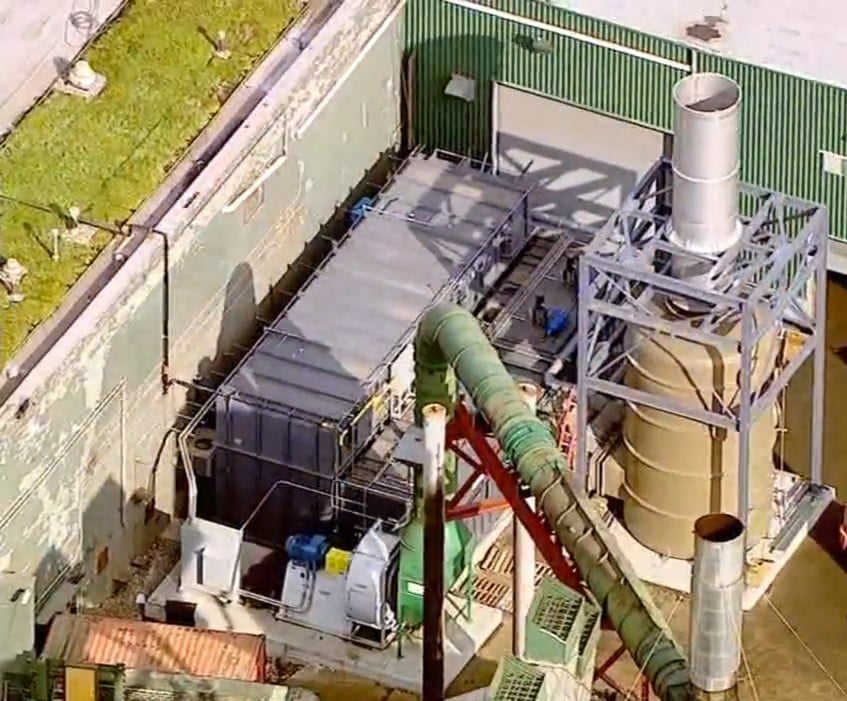



 A "metal shredding facility" is an operation that uses a shredding technique to process end-of-life vehicles, appliances, and other forms of scrap metal to facilitate the separation and sorting of ferrous metals, nonferrous metals, and other recyclable materials from non-recyclable materials. Metal shredding operations all follow the same basic process. The metal shredding facility receives scrap metal input materials, such as whole vehicles and large appliances. Certain hazardous wastes that are still present are removed from the input materials in a process commonly referred to as “de-pollution.” The de-polluted input materials are processed through a hammer mill to break down large metal pieces into smaller pieces, resulting in metal shredder aggregate. Iron-containing metal, or ferrous metal, is separated out, and the remaining metal shredder aggregate is further processed to sort the non-ferrous metals. The material that is left after ferrous and non-ferrous metal separation is referred to as “metal shredder residue (MSR),” which is chemically treated and sent to landfills.
A "metal shredding facility" is an operation that uses a shredding technique to process end-of-life vehicles, appliances, and other forms of scrap metal to facilitate the separation and sorting of ferrous metals, nonferrous metals, and other recyclable materials from non-recyclable materials. Metal shredding operations all follow the same basic process. The metal shredding facility receives scrap metal input materials, such as whole vehicles and large appliances. Certain hazardous wastes that are still present are removed from the input materials in a process commonly referred to as “de-pollution.” The de-polluted input materials are processed through a hammer mill to break down large metal pieces into smaller pieces, resulting in metal shredder aggregate. Iron-containing metal, or ferrous metal, is separated out, and the remaining metal shredder aggregate is further processed to sort the non-ferrous metals. The material that is left after ferrous and non-ferrous metal separation is referred to as “metal shredder residue (MSR),” which is chemically treated and sent to landfills. 
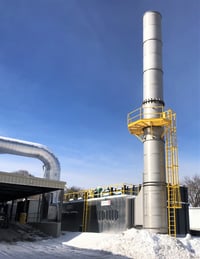 Direct shredder capture - such as a collection system extracting air directly from the shredder, such as from the discharge hood or the area above the shredder inlet.
Direct shredder capture - such as a collection system extracting air directly from the shredder, such as from the discharge hood or the area above the shredder inlet. 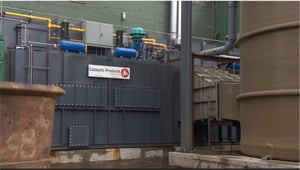 A Regenerative Thermal Oxidizer (RTO) is an industrial air pollution control device utilized to remove VOCs from exhaust air. The RTO incorporates a specialized ceramic media bed which absorbs heat from the exhaust gas. Incoming gases are passed over this heated bed, which destroys the organic compounds through oxidation. Oxidation of VOCs and other air pollutants works by simply oxidizing the air pollutants with oxygen and heat. In this environment the VOCs are converted to harmless inert byproducts like carbon dioxide (CO2 ), water vapor (H2O), and usable heat. These harmless by-products are released to the atmosphere.
A Regenerative Thermal Oxidizer (RTO) is an industrial air pollution control device utilized to remove VOCs from exhaust air. The RTO incorporates a specialized ceramic media bed which absorbs heat from the exhaust gas. Incoming gases are passed over this heated bed, which destroys the organic compounds through oxidation. Oxidation of VOCs and other air pollutants works by simply oxidizing the air pollutants with oxygen and heat. In this environment the VOCs are converted to harmless inert byproducts like carbon dioxide (CO2 ), water vapor (H2O), and usable heat. These harmless by-products are released to the atmosphere.